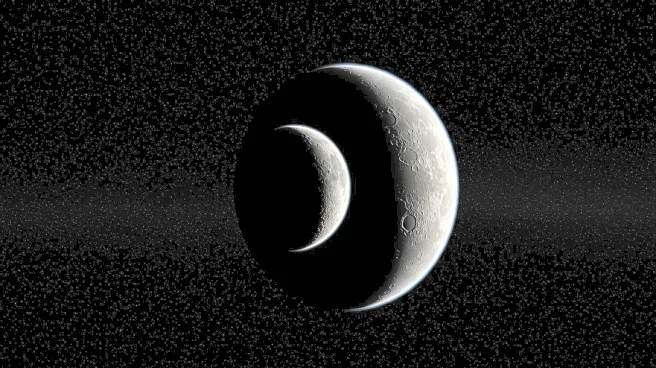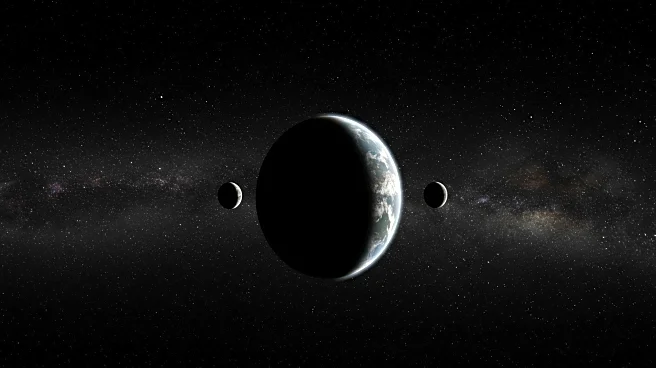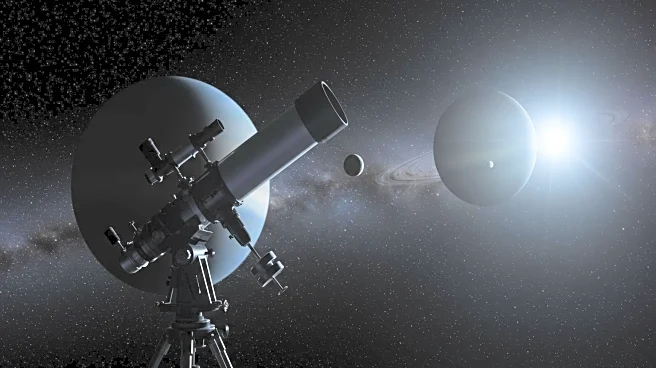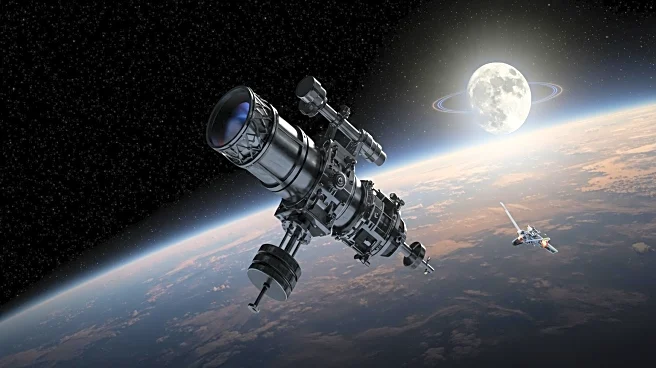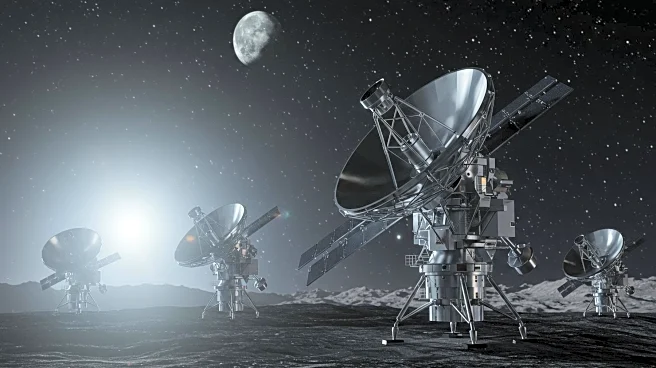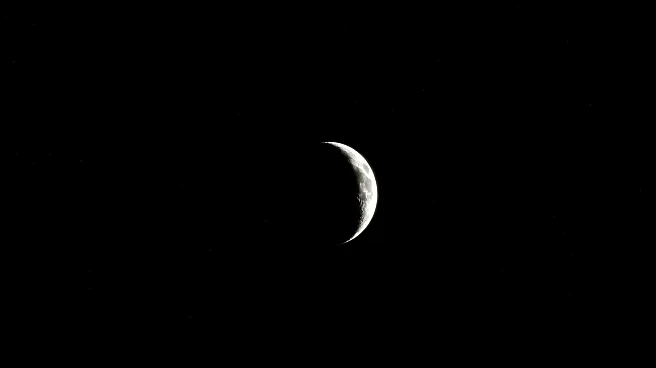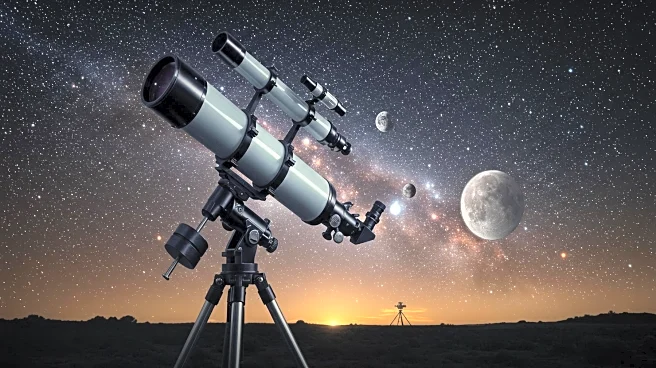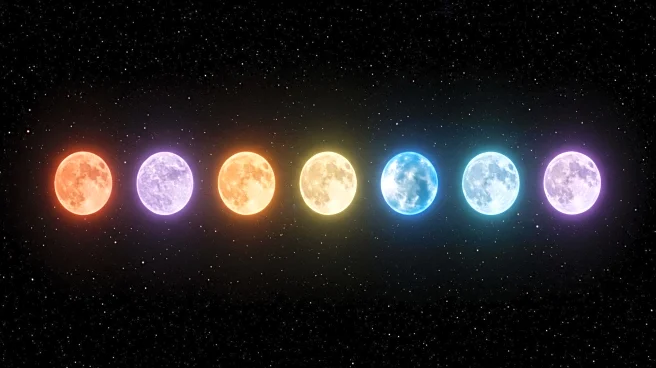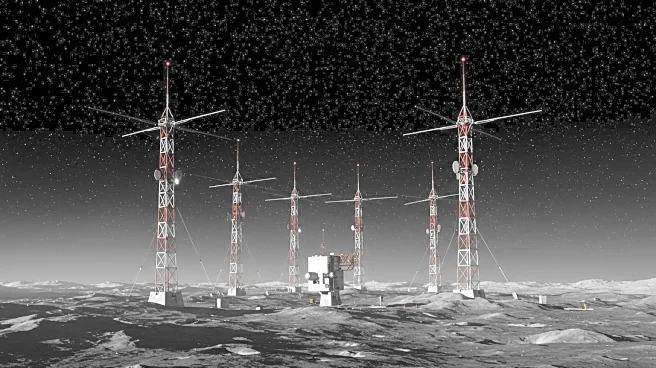What's Happening?
Recent observations using the James Webb Space Telescope (JWST) have revealed that rogue planets, which are free-floating planetary-mass objects, may be capable of forming their own systems of moons. These planets, weighing between five and ten times the mass of Jupiter, were found to have disks containing crystalline silicate, similar to those surrounding young stars. This discovery suggests that these objects could develop miniature planetary systems, potentially including moons and rings akin to those of Jupiter or Saturn.
Why It's Important?
The ability of rogue planets to form moons challenges the traditional understanding of planetary system formation, which typically involves a central star. This finding expands the possibilities for planetary formation in the universe, indicating that starless planets can also host complex systems. It could lead to a reevaluation of how planets and moons are formed, impacting theories of planetary science and the search for extraterrestrial life. The presence of such systems around rogue planets may also offer new insights into the dynamics of planetary formation and evolution.
What's Next?
Further research is needed to confirm the existence of moons around rogue planets and to understand the processes involved in their formation. Continued observations with JWST and other telescopes will help determine the characteristics of these disks and their potential to form moons. Scientists will also explore the implications of these findings for planetary science and the search for life beyond our solar system.
